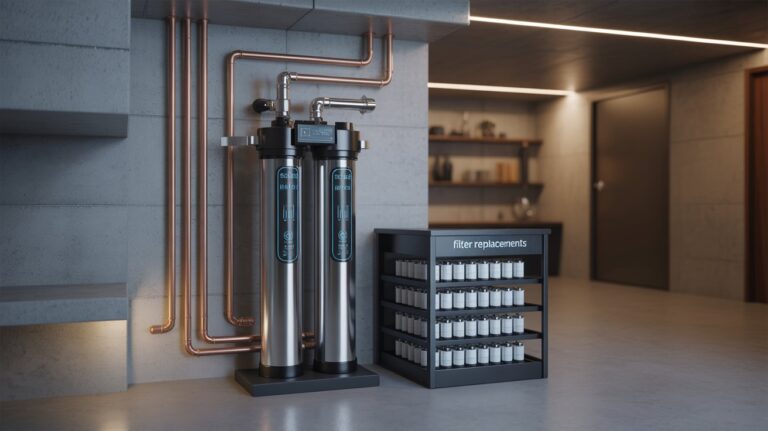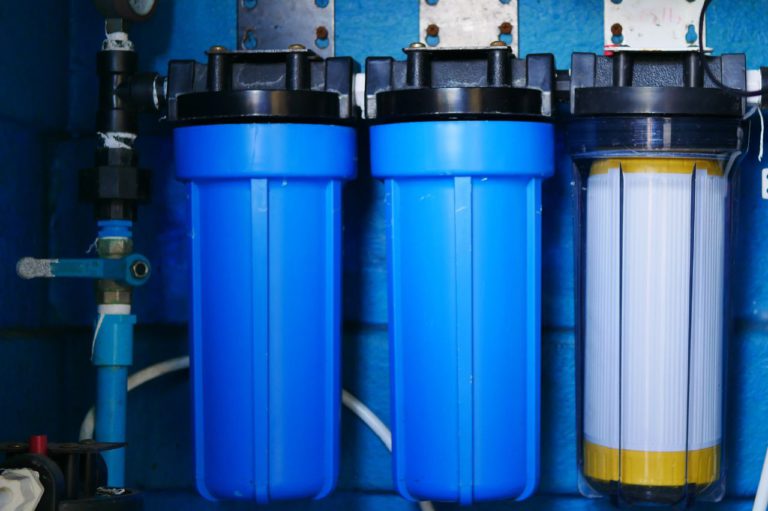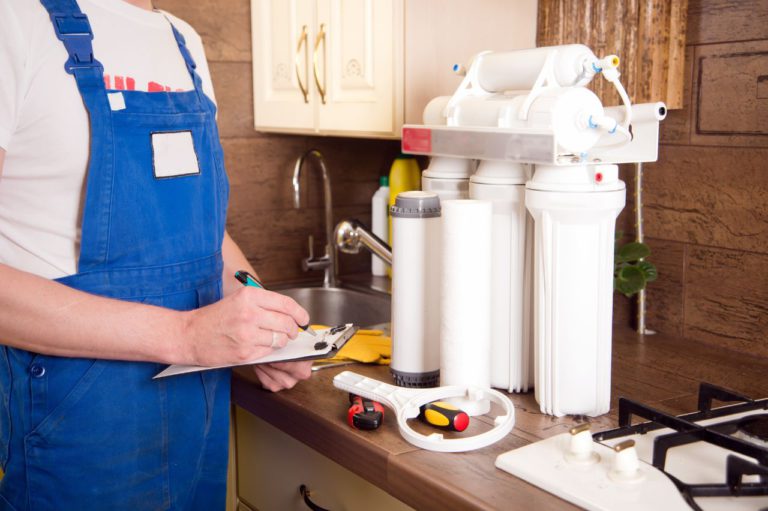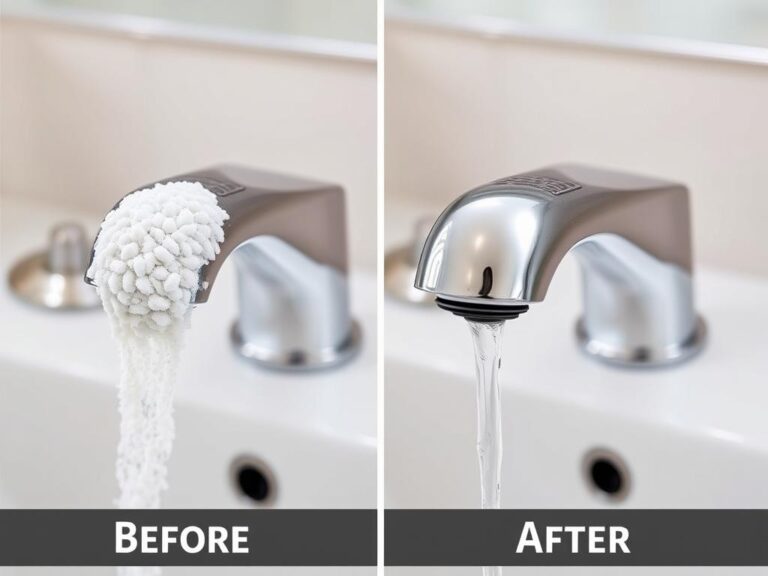Beginner’s Guide to Home Water Softeners
Have you ever wondered why your skin feels dry and itchy after a shower, or why your dishes come out of the dishwasher with spots and residue? It might be because of the water running through your pipes. You see, not all water is created equal, and that’s where home water softeners come into play. Let’s go on a journey to understand how these devices work, what advantages they bring, and how you can keep them in top condition for optimal performance.

What is Hard Water and Why is it a Problem?
Hard water is a term used to describe water that has a high mineral content, primarily calcium and magnesium ions. While not necessarily a health risk, hard water can be a nuisance. It can cause a build-up of scale in your pipes and appliances, reducing their efficiency and lifespan. The minerals in hard water can also leave a soapy residue on your skin and hair, make laundry stiff and scratchy, and result in spots on your glassware.
Common Signs of Hard Water
To determine if you are dealing with hard water, look out for these tell-tale signs:
- Stiff or rough laundry: Hard water minerals can deposit on fabric, leaving clothes feeling stiff or scratchy.
- Scale build-up: Noticeable deposits of white or chalky residue on faucets, showerheads, and appliances.
- Soap scum: A film on your shower doors and bathroom tiles that is difficult to remove.
- Dry hair and skin: Feeling of dryness post-shower due to soap not rinsing off completely.
How Do Water Softeners Work?
Water softeners are devices specifically designed to remove the calcium and magnesium ions that cause water hardness. They most commonly use a process called ion exchange, but there are alternative methods that might suit different needs.
The Ion Exchange Process
The ion exchange process is the most common method used in water softeners. Here’s how it works:
- Mineral Tank: Water passes through a tank filled with resin beads that are negatively charged.
- Ion Exchange: The positively charged calcium and magnesium ions in the water cling to the resin beads. In return, sodium or potassium ions are released from the beads into the water.
- Regeneration Cycle: Over time, the resin beads reach their capacity to soak up hard minerals and need to be regenerated using a brine solution, reloading them with sodium or potassium ions.
This exchange effectively removes the hardness from the water, resulting in soft water that flows through your home.
Salt-Based vs. Salt-Free Water Softeners
While salt-based water softeners use the ion exchange process, there are also salt-free alternatives. Let’s compare the two:
| Feature | Salt-Based Water Softeners | Salt-Free Water Conditioners |
|---|---|---|
| Process | Ion exchange using salt pellets | Template-assisted crystallization, Polyphosphate |
| Maintenance | Regularly add salt to the tank | Minimal, occasional media replacement |
| Effects | Removes hardness ions | Prevents scale from forming |
| Use Cases | Ideal for reducing hardness in severe cases | Better for areas with mild hardness |
Salt-based softeners are effective in conditions with high levels of hardness, whereas salt-free options might be more appealing if you’re looking for a low-maintenance solution for mild hardness.
Benefits of Using a Water Softener
The advantages of using a water softener extend beyond just mitigating the signs of hard water. Let’s look at the broader benefits.
Prolongs the Lifespan of Appliances
Your household appliances work more efficiently with soft water. This is because the absence of scale build-up means appliances like dishwashers, water heaters, and washing machines do not have to work as hard, reducing their energy consumption and prolonging their operational lifespan.
Saves You Time and Money
Cleaning becomes easier with soft water, as it reduces the amount of detergent needed and helps soap and shampoo lather better. You’ll spend less time scrubbing soap scum and fighting with deposits, which means more time enjoying your day and less on chores.
Softer Skin and Hair
With soft water, your skin feels smooth and your hair becomes easier to manage. Soft water rinses soap and shampoo more effectively, preventing the dryness that hard water can cause.
Environmental Impact
While the production of sodium-rich wastewater in salt-based systems can impact the environment, efficiencies gained from reducing energy consumption of appliances do offer some compromise. Moreover, salt-free systems address environmental concerns by not contributing sodium to wastewater.
Choosing the Right Water Softener
Selecting the right water softener can seem daunting with various models and options on the market. Here are a few factors to consider:
Water Hardness Levels
Knowing the hardness level of your water is critical. You can measure it using a water testing kit or by contacting your local water provider. Hardness is often measured in grains per gallon (gpg), with anything over 7 gpg considered hard water.
Household Size and Water Usage
The capacity of a water softener is essential, especially if you have a large household with significant water usage. Consider a larger capacity softener if this is the case to avoid frequent regeneration cycles and to ensure a steady supply of soft water.
Budget and Maintenance
Consider the total cost of ownership, including initial purchase price, operational costs, and maintenance. Salt-based water softeners require regular salt refills, whereas some salt-free systems might demand media replacement.
Local Regulations
Be mindful of local regulations where you live, as some areas have restrictions on the discharge of sodium-rich wastewater. In such situations, a salt-free system might be preferable.
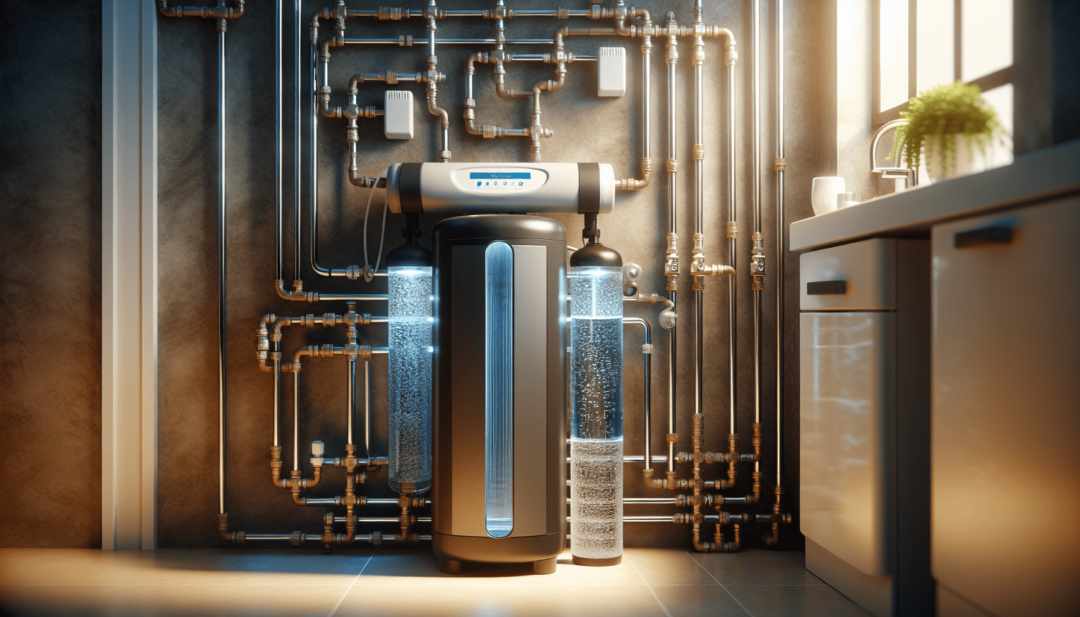
Installation and Maintenance of Water Softeners
Understanding how to install and maintain your water softener will help ensure it functions optimally and lasts longer.
The Installation Process
If you are handy with plumbing, installing a water softener might be a feasible DIY task. Otherwise, hiring a professional can help prevent potential issues. Here’s a brief guide on what the installation involves:
- Selecting a Location: Choose a spot near your main water line and close to a power outlet. Ensure there’s a drain nearby for the regeneration process.
- Plumbing Connections: Cut into the water line to install the bypass valve, allowing you to divert water if necessary.
- Drain and Overflow Setup: Connect to a proper drain hose to facilitate the discharge of wastewater during the regeneration cycle.
- Evaluate and Start: Test the system for leaks and adjust the settings to match your water hardness level.
Routine Maintenance
Maintaining your water softener ensures its longevity and effectiveness. Here’s a checklist:
- Salt Levels: Check and refill the salt tank regularly to keep the ion exchange process functional.
- Brine Tank Cleaning: Annually clean the brine tank to prevent any build-up of sludge or salt bridges.
- Resin Bead Health: Over time, resin beads can degrade. They generally last around 10 years, but keeping an eye on the softening performance can alert you to any changes.
- System Regeneration Cycle: Ensure the system periodically regenerates based on your water usage and hardness settings.
Troubleshooting Common Issues
It’s not uncommon to face a few hiccups with your water softener. Here are solutions to some of the most frequent problems:
Water Feels Hard
If you notice your water is still hard, check the following:
- Salt Bridges: Solid layers of salt form in the brine tank, preventing proper regeneration. Break up these layers.
- Resin Bead Issues: The resin beads might be at the end of their lifecycle and need replacement.
- Settings Adjustments: Ensure the settings on your softener are suited for your water hardness levels.
Noisy Operation
Unusual sounds could signal issues with the valves or the motor. Inspect the valves for obstructions and ensure the motor is not overworked. Adjusting or lubricating the components may help.
Leaks
Check connections and fittings for tightness and inspect the tank for any visible damage. Tightening connections or replacing seals might resolve the leaks.
Should You DIY or Hire a Professional?
Deciding between a DIY approach or professional help comes down to your comfort with plumbing tasks and the complexity of the system. Consider professional installation and maintenance for complex or large systems, or if you lack the requisite tools or experience.
Final Thoughts
Home water softeners can significantly improve the quality of life by mitigating the effects of hard water. From prolonging appliance longevity to offering smoother skin and hair, the benefits are clear. Understanding how these systems work, maintaining them properly, and troubleshooting issues can keep your home running smoothly and efficiently for years to come. Embrace the transformation that soft water can bring into your home, and enjoy the silky, clean feeling it offers. By ensuring you’re informed and proactive in managing your water system, you can optimize both comfort and efficiency in your household.



